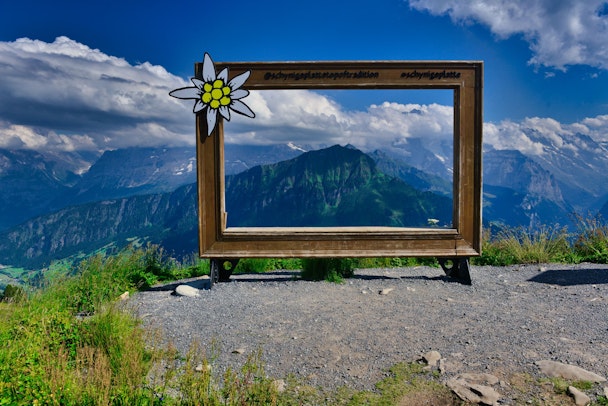Sustainability is part of out-of-home’s DNA, and technology will help us do better
Out-of-home advertising has met its fair share of criticism for its carbon outputs. But Joe Sheppard of specialist agency Kinetic argues that baked-in sustainability in the channel can be a springboard.

Is OOH a ‘naturally’ sustainable medium? / Paul Szewczyk via Unsplash
Out-of-home (OOH) has an enviable track record in delivering sustainable advertising. Brands that invest in the channel are, by default, helping to fund myriad local community and environmental initiatives.
Since I come from an OOH agency you might be thinking, ‘well, they would say that, wouldn’t they?’ Of course, and with good reason. OOH has always been a medium that benefits the communities it operates in. The majority of the public almost certainly doesn’t realize that the advertising at a bus shelter funds the construction, maintenance, and cleaning of that shelter. Commuters on the London Underground, the Metrolink in Manchester, or Edinburgh Trams will probably not know that much of the revenue from the advertising they see on those networks goes back to the transit service to help fund local public transport – taking cars off the road in the process.
It’s a model repeated in countless towns and cities. In the UK at least, almost 50% of OOH revenues go back to local authorities to help fund the development of public infrastructure, sustainable transport networks and the wider economy.
Advertisement
Positive steps
More recently, there have been more visible examples of OOH’s positive impact on urban areas. These include the wider use of living walls and bee bus stops, rainwater harvesting units, solar panels, and poster sites that help purify urban air.
Meanwhile, OOH media owners are investing in more eco-friendly inventory, such as using recycled materials and sustainable woods alongside different materials like Kavalan, which offers all the strength, durability and benefits of PVC, but none of the harmful environmental effects.
OOH has drawn criticism from environmental activists due to the power consumption of digital screens. But the 30,000 digital OOH screens in the UK only represent a small fraction of the 100m total screens in the country. And three of the four largest media owners’ estates are now powered by 100% renewable energy.
OOH is a one-to-many medium, meaning that a single OOH screen can reach a significant audience. It would take other media many thousands (in some cases, millions) of screens to reach similar audiences. Digital OOH is one of the most sustainable formats on a cost-per-impressions basis.
Advertisement
Changing behavior: a look at Tesco
OOH can be used by brands to drive real changes in consumer behavior. It’s no accident that OOH played a key role in Tesco’s Cop26 campaign, their most climate-conscious OOH campaign to date.
The campaign used multiple data sources to identify regions where greener actions were needed and then deployed specific messages on individual screens by location. In areas trying to reduce meat consumption, it showed its plant-based range; where people needed to recycle more, they were informed of Tesco’s in-store soft plastics recycling initiative. In towns where food waste was an issue, leftover recipe ideas were displayed.
The campaign provided valuable information on small lifestyle changes that would help protect the future of our planet, and where Tesco could help. It was all delivered using renewable energy, recycled and pollutant-reducing materials. Even more importantly, it generated much-needed environmental action.
Suggested newsletters for you
Room for improvement
A strong track record does not, however, make OOH immune to criticism. Nor does it mean that there are areas where we cannot improve. The public is holding us to account and scrutiny will only increase in the future. Innovation and technology, on both a large and a small scale, will be essential.
The next generation of digital screens will use significantly less power and there will be more use of solar energy at advertising sites. Over the coming year, we’ll see an expansion of living walls and bee bus stops, increasing biodiversity by creating ‘stepping stones’ for flora and fauna in urban areas. The use of poster treatments such as Pureti, which both purifies the air and makes the posters themselves self-cleaning, will become more widespread.
Media owners are already well on their way to making recycling their default position. 100% recyclable bus stops, complete with seats made from milk bottles and industrial furniture waste, are becoming the new normal.
Reducing the sector’s carbon footprint requires action throughout the supply chain. Not all innovations will make headlines. Nonetheless, increasing the use of electric vehicles and machinery, using LED lighting, and sending less waste to landfill will all have an impact.
Sustainability isn’t just the right thing to do. It is a commercial imperative. Consumers want brands to do more and they’re not afraid to call out offending brands or vote with their wallets. Sustainability is in OOH’s DNA. The sector can be proud of its achievements, but cannot be complacent. It’s time to go further and continue to help brands deliver on their green promises.
Content by The Drum Network member:

Kinetic
Kinetic Worldwide is the world’s largest planner and buyer of Out of Home media and the global leader in understanding how brands can connect with people’s lifestyles...
Find out more
